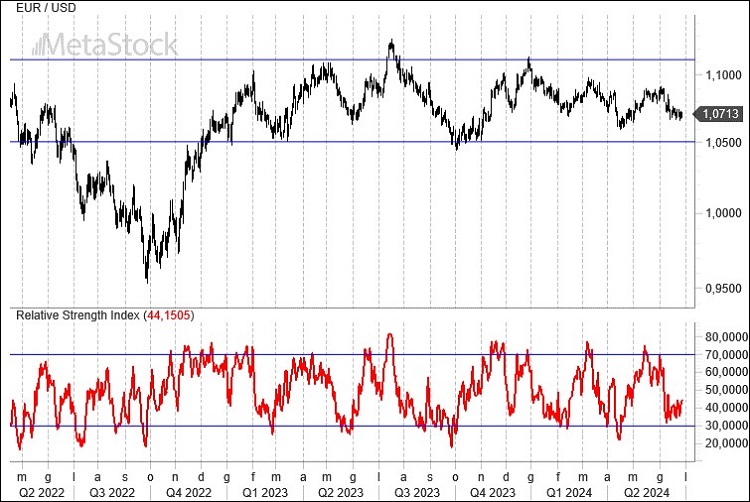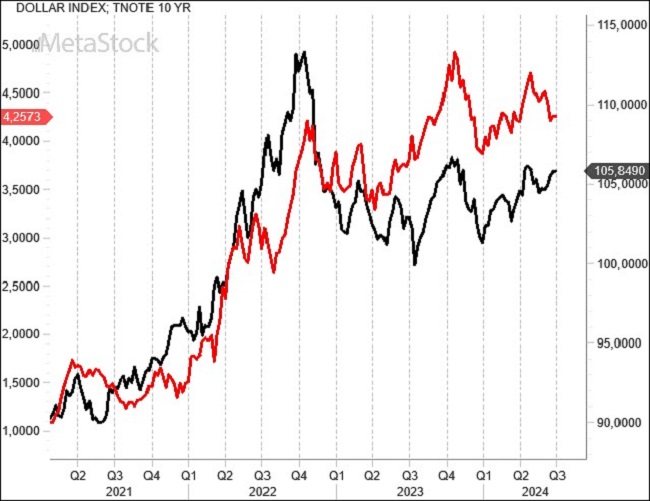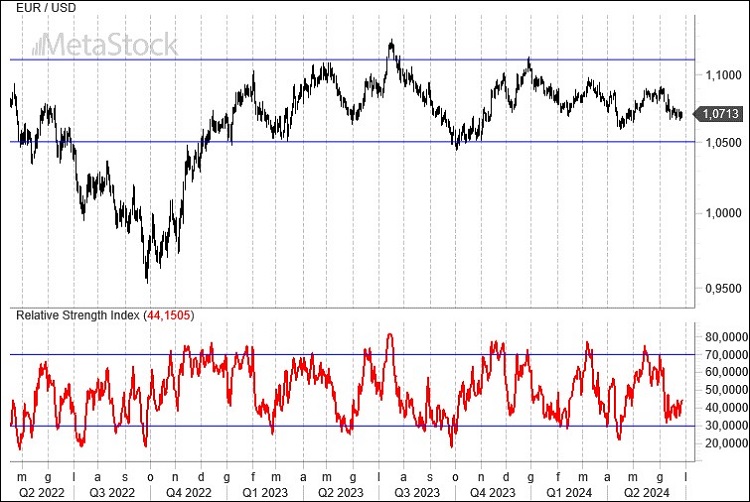- Stock markets are hovering around historical highs even though the Fed remains hawkish on interest rates, showing no signs of lowering borrowing costs as markets had hoped.
- Biden’s disastrous performance in the TV debate against Trump ahead of the November elections.
- France remains the focal point for markets trying to gauge how political (and monetary) policies will influence the future of the EU and the euro. The first round of the French elections confirmed the victory of the right and the defeat of Macron.
- EurUsd remains depressed but is still far from the critical support area of 1.05. The post-election reaction has been positive, however.
Key Events Impacting Markets: Trump-Biden Debate and French Election
Last week was largely influenced by two main events: the first Trump-Biden debate and anticipation for the French election, where Macron’s tenure at the Élysée is at stake. The final round of the French election will be on July 7, but the current state of tension is palpable in the euro and European bond markets, where French spreads remain wide. Early results confirm Macron’s defeat and the right’s victory, with the added surprise of the left’s performance.
Central bankers from the ECB have repeatedly tried to dampen expectations for new rate cuts, which the market is clamoring for in Europe after witnessing slowing inflation and growth.
Recent news from countries like Canada, Australia, and Norway hasn’t been encouraging, although the UK has seen a more significant-than-expected slowdown in consumer prices. It was also a slow week for data in the US, where the Federal Reserve has made its stance on borrowing costs clear. Signs of a slowdown in the labor market are needed before considering any intervention. The yield curve remains inverted, and stock markets are at all-time highs, leaving the underlying tone of the markets unchanged.
The first TV debate between Trump and Biden ahead of the November elections decisively favored Trump, with the incumbent president visibly struggling.
Technical Analysis: EurUsd Trading Range and Divergence Patterns
The trading range of EurUsd continues to be dull and exhausting. The absence of significant news has kept the euro well away from the danger zone, while the US dollar remains distant from the resistance range that would set the stage for a revival of the euro. Breaking out of this broad range, which has persisted since late 2022, will be destabilizing for one of the two currencies. Until there are significant developments on the monetary policy front (especially American), holding onto greenbacks to benefit from the yield carry remains the only acceptable strategy. We’ll see if the partial results (the second round is set for July 7) of the French elections and the first polls post Biden-Trump debate will alter a path that has so far been characterized by very low volatility.

American interest rates have been an excellent guide for the Dollar Index’s trajectory over the past year. Rates rise, the dollar rises. Rates fall, the dollar falls. This pattern is now diverging. This can likely be explained by a strong dollar driven more by external factors (French elections and yen depreciation) than a change in monetary policy, which the Fed seems to have confirmed as stable until at least September. There’s no rush or desire to alter the current state of interest rates until there are clear signs of a slowdown in the labor market, and possibly even in stock markets that continue to hit new all-time highs. It’s evident that a new rise in Treasury yields would further strengthen the dollar, which could then aim to break not only new highs against the yen but also the critical level of 1.05 against the euro.



Leave a Reply
You must be logged in to post a comment.